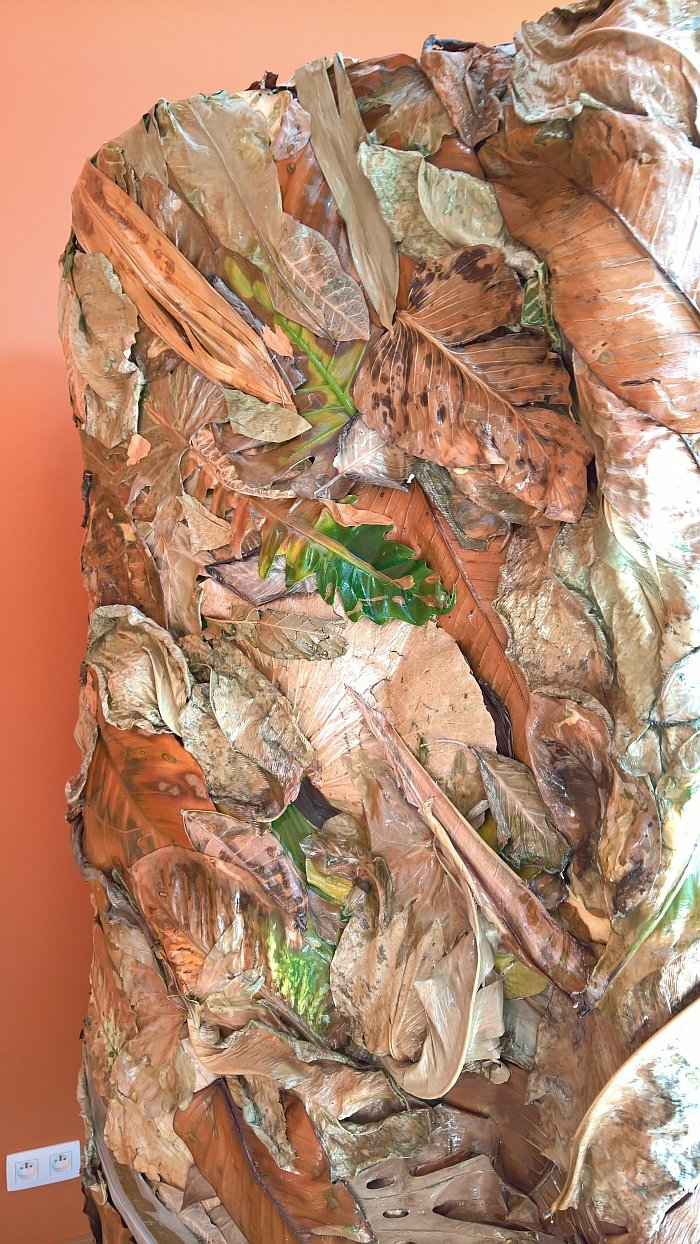While for most locations a design week is sufficient, Brussels takes a whole month. We've never asked why, just assume it is because in the bi-lingual Franco-Dutch city where everything has to be repeated twice, thrice when one considers the more or less obligatory English required for the large diplomatic community in the de facto European capital, everyone is just used to things taking a little longer and plan accordingly.
Whatever the reason, throughout September Brussels is playing host to a wide variety of design events, events reflecting various definitions, understandings and degrees of design, and over the next couple of weeks we'll bring you some of those projects which particularly caught our attention, starting with an exploration of nature that while presenting unmistakable parallels to Brussels' Art Nouveau heritage, couldn't be further removed.
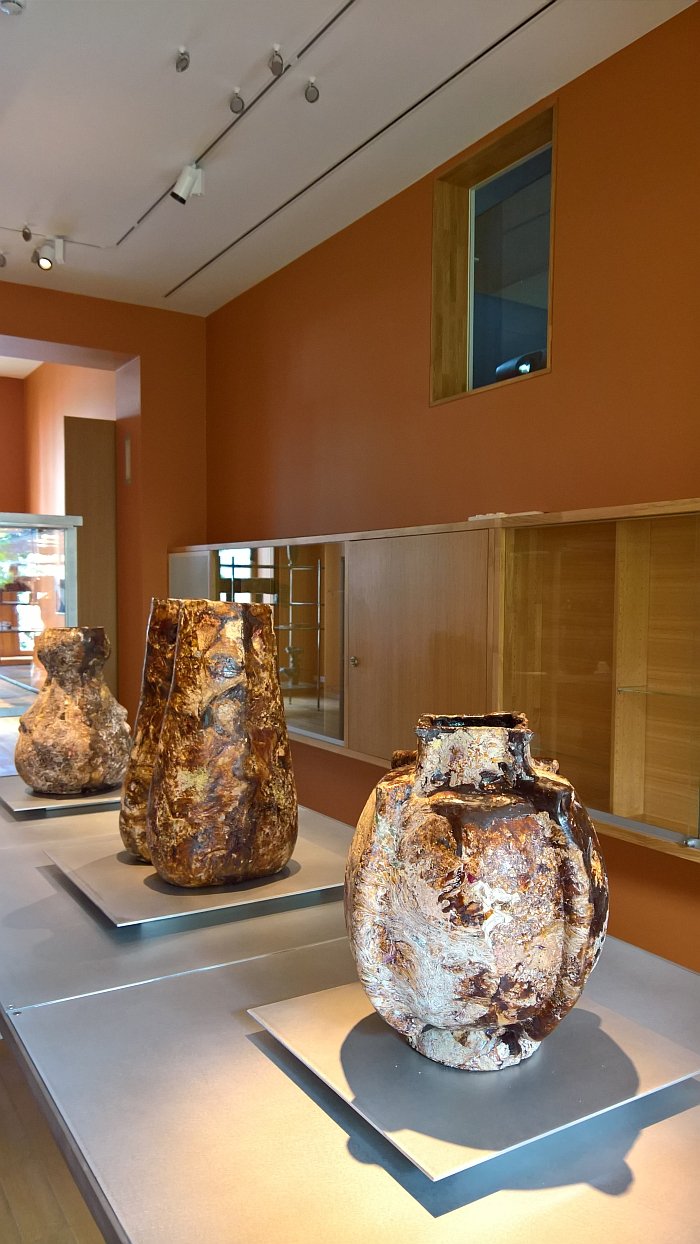
Architecture and design from the turn of the 19th/20th centuries has been a regularly recurring theme of the smow blog throughout 2018, which wasn't planned, just kind of crept up on us, largely through Charles Rennie Mackintosh and Peter Behrens' 150th birthdays and the exhibitions Wagner, Hoffmann, Loos and Viennese Modernist Furniture Design at the Hofmobiliendepot Vienna, Made in Denmark. Design since 1900 at the Grassi Museum Leipzig and Art Nouveau in Nederland at the Gemeentemuseum, Den Haag. The fact that Brussels should have delivered a continuation perhaps shouldn't come as a surprise given the key role the city played in the development of understandings of design and architecture at that period.
In context of Design September Brussels 2017 the Victor Horta Museum staged Living Organisms an exhibition of the fantastical, near folkloric, landscapes of Nacho Carbonell, in 2018 they have followed up with the much more natural, yet every bit as detached and allegoric, landscapes of London based, Royal College of Art, RCA, graduate, Marcin Rusak; a designer who, in many regards, and in contrast to a Nacho Carbonell or a Victor Horta, less takes his inspiration from nature as uses nature directly, for all flowers and leaves. Flowers and leaves he generally, though not exclusively, lets decay.
Presented under the title Nature of Things II Marcin Rusak used his exhibition at the Horta Museum to both introduce his work, and also set his work in dialogue with that of Victor Horta, an architect and designer whose own interpretation of "modern Belgian curvatures" makes Henry van de Velde appear overly reserved, unnecessarily cautious.
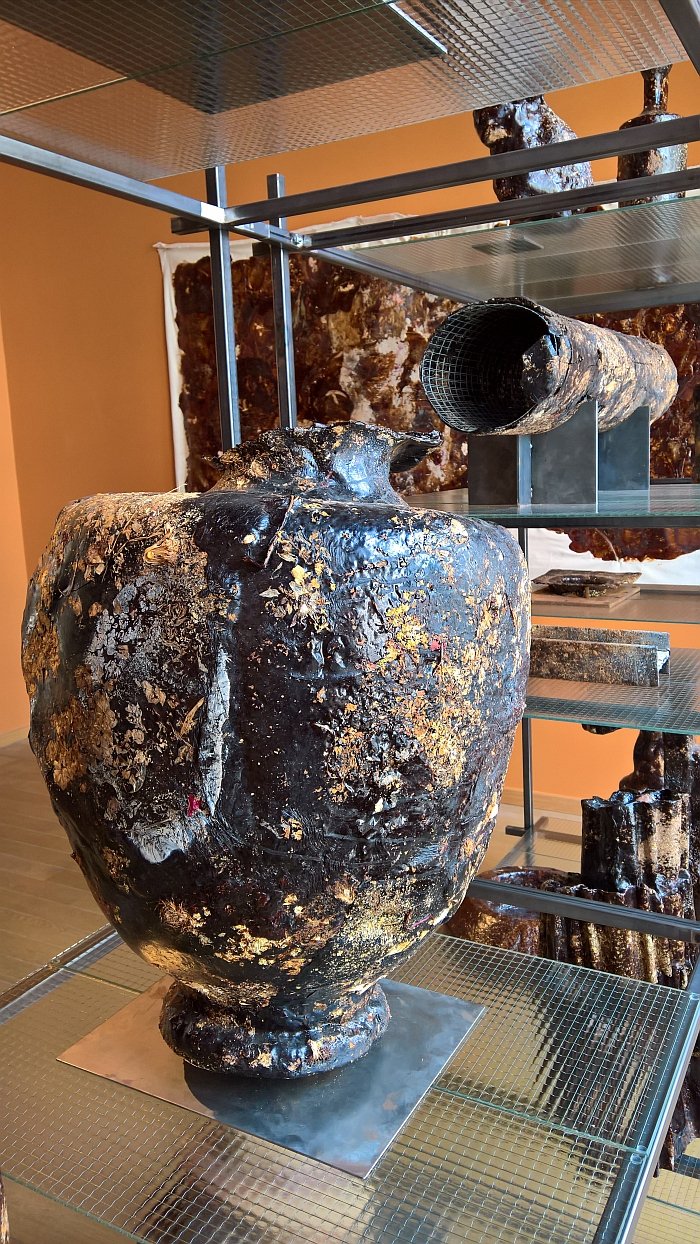
As noted ad nauseam in these pages, the floral and the florid were key components of Art Nouveau, or at least in the early years, be it the figurative alliums of a Charles Rennie Mackintosh, the more natural representation found in the Netherlands and Denmark or the sweeping abstracted stems of van den Velde, Behrens, Horta et al, yet Marcin Rusak effortlessly tops all these historic representations with with a cupboard crafted from exotic leaves.
No honest.
OK, a bit more than exotic leaves, there is a supporting frame and a layer of epoxy resin to hold the leaves in place, but importantly not enough to save them from decaying. Which they slowly are.
And at first glance a cupboard made of exotic leaves makes perfect sense in one of the most important Art Nouveau houses in a city whose architecture is in many regards dominated and defined by Art Nouveau houses: florid representation ✔, hint of the allure of distant cultures ✔, at one with the natural world ✔, a work one can imagine encountering in a mythical kingdom ✔. It is however also completely at odds with its surroundings.
For all its ostensible decoration and extravagance, Art Nouveau was largely about rationalisation, about functional objects and buildings appropriate for contemporary life. And an actively decaying wardrobe made of leaves clearly isn't. Is clearly as appropriate and functional as the legendary chocolate fireguard. And therein lies its fascination and relevance. This juxtaposition is the trigger for reflections on all that which surrounds you, why its there, what is important, what is relevant, what we can learn from it.....But to meet a cupboard made of exotic leaves it is also the most gloriously surreal encounter. You automatically smile.
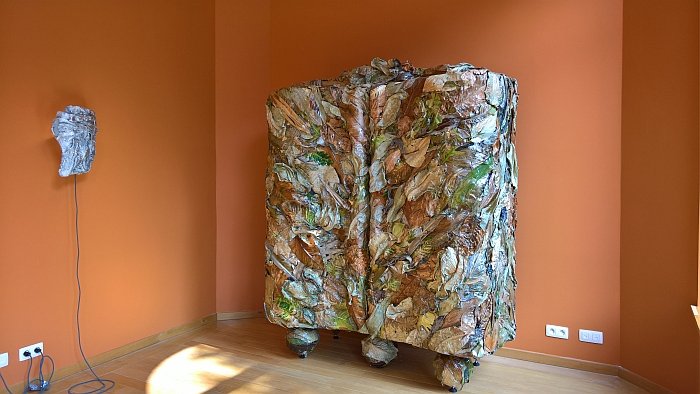
Remaining with ideas of decay and temporaility, with his Perishable collection Marcin mixes past-their-best flowers, salvaged from London's central flower market, with an organic matrix formed from shellac, beeswax and resin, and uses this as basis for objects, objects which slowly, well, perish. In addition to abstract forms the Perishable collection also features more functional works including vases, urns and flasks, formally, and in their decoration, reminiscent of works from great civilisations past, but which in comparison to their historic predecessors deform in sunlight, are negatively affected by water and generally slowly fade and disintegrate over the years, the speed of deterioration being dependent on the ambient environment. And eventually they become useless.
An expensive, decadent madness we hear you cry! Who needs a vase which over the years perishes and becomes functionless?, we hear you cry! You with your smartphone that needs to be replaced every few years; you with your new car which loses half its value the minute you leave the dealership; with your televisions, razors, electric toothbrushes, running shoes, trouser presses et al which you replace the moment something better, quicker, sharper comes along, not to mention your regular purchases of new clothes despite possessing a full wardrobe at home. Modern consumer culture is about planned obselence, is about objects that are intended as transient, fashionable, throwaway, which continually, deliberately, become less valuable, less functional, and which you continually, unquestioningly, replace, buy anew, and therefore keep the nihilistic wheels of consumerism rolling. But a decaying vase irritates you.
It's a very simple metaphor, but one very satisfyingly realised.
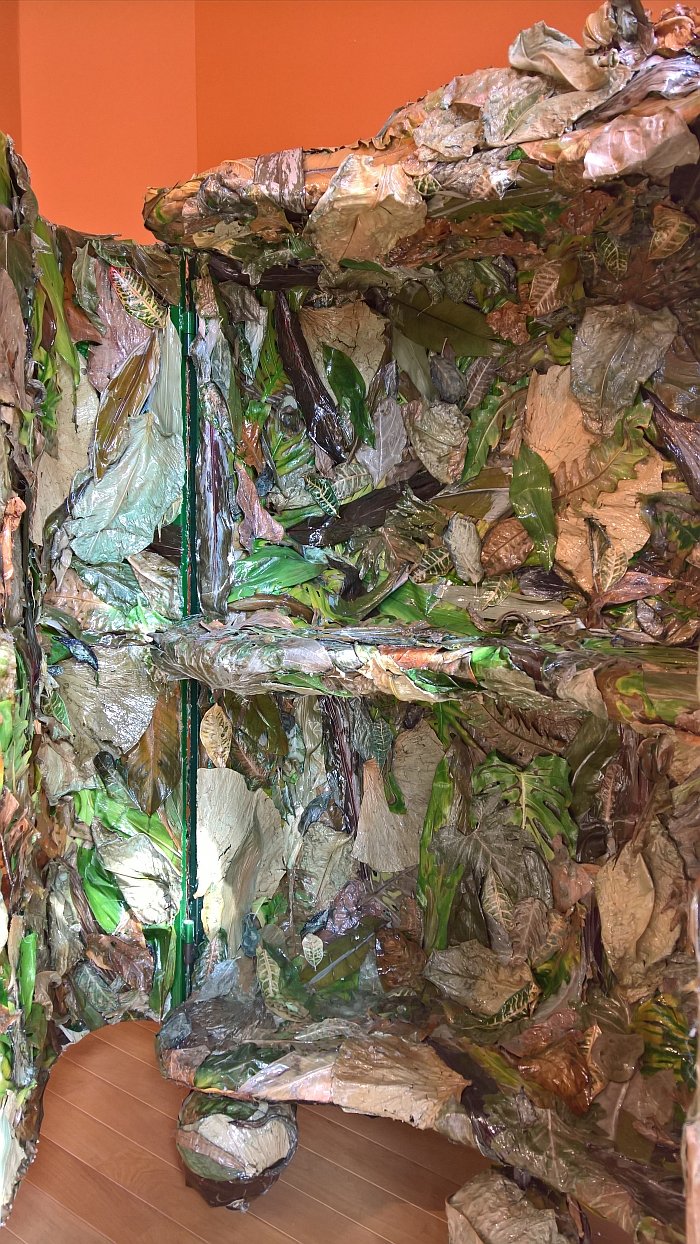
Beyond decay and destruction Marcin Rusak has developed with his Flora Perma collection a range of more permanent objects, or perhaps better put developed a material which can be transformed into a collection of objects intended for long term use, and where the same past-their-best flower waste is mixed with a more durable resin resulting in a surface where the exposed flowers look painted/printed, we'll not say resemble works by 17th century Flemish masters, but certainly have that dark, slightly unnerving, almost scary, yet familiar, warm accessibility that one finds, for example, in the work of 17th century Flemish masters, flowers which look too good to be true. A truly delightfully confusing effect, absorbing and joyous, and importantly one that isn't as garish or kitsch as it sounds. The fact the flowers are real, aren't painted/printed, bequeaths the whole an integrity and charm, much in the way a carefully considered figurative, abstract Victor Horta stem brings an integrity, charm and joy, be that in a decorative or functional context.
In context of Nature of Things II Marcin has placed a bench, table and shelving made from Flora Perma material in the Horta Museum, works which as with the exotic leaf cupboard cause you to reflect differently on the works of Victor Horta which surround you, and thereby on Art Nouveau. Which can only be a good thing.
Marcin Rusak - Nature of Things II runs at the Horta Museum, 25, rue Américaine 1060 Brussels until Sunday October 7th, further details can be found at www.hortamuseum.be
From Friday September 14th until Sunday November 18th, Marcin Rusak and Marlène Huissoud are the subjects of the exhibition Botanic Psyche at Spazio Nobile, Rue Franz Merjay, 142, 1050 Brussels. Further details can be found at www.spazionobile.com
And for all in or near Brussels on Wednesday September 12th, Marcin Rusak is holding a talk in context of the Design September conference. Full details can be found at http://designseptember.be
And last, but by no means least, full details on Marcin Rusak and his work can be found at http://marcinrusakstudio.com
Sadly on account of the restrictive photo rules inside the Horta House we have no photos of the in-situ Perma Flora works, and not for want of trying. Should any official photos cross our paths we will update this post. Images of Perma Flora works in general are available on Marcins's homepage.
